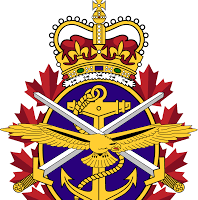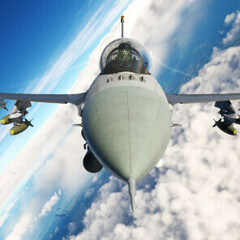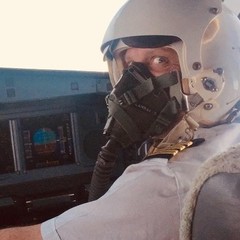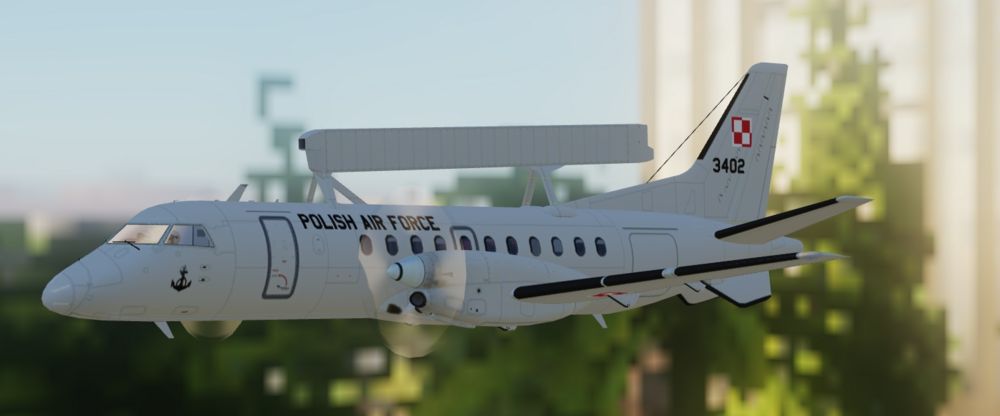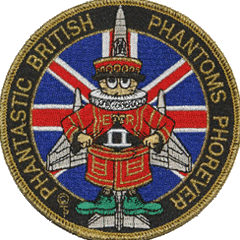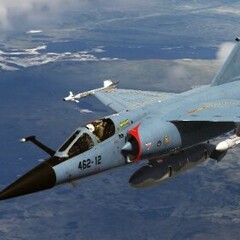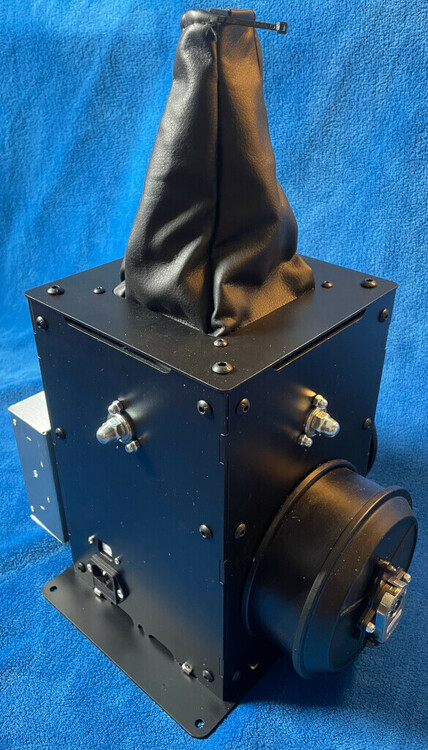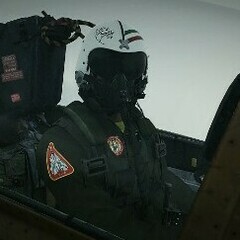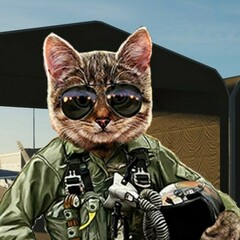Leaderboard
Popular Content
Showing content with the highest reputation on 05/30/24 in all areas
-
I agree fully! The only thing I would add is that we can go the extra mile and tailor the delivered solution and in-sim-experience (immersion) to each user's configuration and expectation. We proposed some initial settings as in the release version, but we will continue tuning them with your feedback to provide the best experience without making the simulation unrealistic. That's why it's early-access software.9 points
-
8 points
-
Hey everyone, thank you for all your messages. First of all, I wanted to ask everyone reporting if you could be a bit more precise - I mean, please include the conditions in which you performed your observation, like gross weight, fuel and stores (or simply CG location), altitude, and speed. Those things have a super high impact on trimming. Second, please remember that the trimming speed in the F-4 was dictated mainly by the requirement to cancel stick forces during quick force changes, usually when accelerating. Also, the requirement for trim speed consistency wasn't very high. It took approximately 8 to 13 seconds to move the actuator between the extremes. I just wanted to note that 13 is 163% of 8 . I mean, don't shoot the messenger; send letters to McDonnell. Finally, please let me quote some test pilot ratings of the pitch trim. They come from various feel trim configurations, but please remember that those configuration changes were a slow evolution rather than a revolution, so most of the comments on the controls can be applied to all versions of the F-4. I can promise that I'll take a look and maybe increase the time for the actuator motor to get to full speed, but it may be a bit difficult to achieve the results you'd like to have without sacrificing realism. However, I don't see a reason why we can't look for some not-so-realistic optional settings for those of you who prefer usability over historical accuracy. Also, please don't feel bad if you like such settings - it's a sim/game, so the most important thing is to have fun, and with the hardware we have, it's impossible to get the same accuracy and feedback as in the real aircraft.7 points
-
The best way to figure out trim and AoA for landing is to practice slow flight in the F-4: Your overall goal is to maintain heading and altitude without climbing or descending while going as slow as possible. 1. Pick a heading and altitude to start 2. Reduce your throttle to idle. 3. When you get to 250Kts, lower your landing gear, at 220 lower your flaps. 4. Keep increasing your AoA to maintain altitude as you slow down. Eventually, you will be on AoA and you will hear the solid tone. 5. Now that you are at the correct AoA, you need to slowly start increasing power to maintain altitude. You want to freeze your airspeed and altitude so neither gauge is moving. You are now in slow flight. 6. Now trim away the stick pressure to maintain what you have. You want to set and then trim, do not trim to set or you will never stabilize. Hand fly the aircraft to the position you want it in and then trim away the forces (harder to do in a sim as you have to do it by look and not feel). Fly around for a few minutes like that; no changes in airspeed and altitude, but definitely do turns (this will help with landing patterns). The F-4 is pretty stable. As mentioned by others, the airspeed will change based on weight. With full air to air missiles and about 300lbs of gas or so, the speed seems to stabilize around 157kts. 7. Now, in order to descend, you just need to reduce a little power. Adjust throttles to maintain whatever rate of decent you want. Don't pull too much power or you will drop like a rock, and it takes a little bit for the J79s to spool back up and arrest your decent. Your airspeed and AoA should not change much while in the decent. Use pitch to maintain airspeed and power for altitude. Practice doing this in slow flight before attempting landing and you will see and hear the visual queue's you need to land. 8. Next I would practice straight in approaches to the runway where you can judge if you are too high or low and find that 2.5 or 3 degree sweet spot. Once you have those, you can add in pattern work. At that point you are just maintain altitude and airspeed in the turn until you are on final and ready to descend. It is very tricky at first, but practicing slow flight helps a lot with any aircraft.6 points
-
Not to bud in here, but CH likes to order the Models he uses to create his assets. You're better off sending him a few bucks to help him out. I say this because I asked him if I could purchase a Model for him, but I was better off sending him a donation. All the donations he receives are 100% used to purchase Models. There are several links to send a donation on his page! Respectfully, Timex 3 Here is a direct link, https://buy.stripe.com/9AQ3dV4CSbo20Te9AB, Timex 36 points
-
6 points
-
FWIW, the goal we had with the F14 module was to make the sim fly like the aircraft did, including its idiosyncrasies and challenges, and not succumb to making it fly the way we “wished” it would fly. For perspective, the A-4 series of jets that we all flew in training were very sensitive in pitch and roll, yet students earned their instrument ratings in them (no autopilot by the way). I don’t think that in two years, that I ever got an TA-4J completely trimmed for more than 30 seconds in smooth air during cruise. The F14 was more stable than the A-4, and much easier to fly on instruments, or during approaches or landings. I see a lot of comparisons here to the F14 module, understand that the F-4E should feel less stable than the Tomcat. Trimming and flight path corrections are part of a constant process. The pilot was constantly making tiny inputs, and “hands off” flight usually meant accepting a small deviation in vertical rates. Fighters and Attack aircraft would not pass FAA Certification Standards. I’ve emphasized this many times, you need to support your right forearm and fly with your fingers and wrist. You will be making small inputs in pitch at all times.5 points
-
How I understand all the statements: 1. The Viper has a new (big) INS drift and can't currently correct it by itself (no matter of the time period of the mission (GPS is working)) or (seems to be not 100 % clear) can do a self fix for the INS drift every 60 seconds. 2. Nobody knows how big (in feet) in how many seconds the INS drift of the Viper is. 3. Preplanned GPS attacks don't work anymore with the same precision as before, with only using STPT coordinates. So preplanned doesn't make sense anymore, if you want to stay high and try to use the clouds as cover. 4. A JDAM can fix the INS drift by itself 30 seconds after the release (ED seems to working on it). 5. No other Jet has an issue with preplanned bombing runs like the Viper. 6. The JDAM module can fix the INS drift a way better than the GPS module of the Viper (Viper 60 seconds for an INS drift fix, JDAM 30 seconds (future)). 7. Nobody can tell us, how it should work in which way, if something special happens and why the old "correct as is" is now "was wrong all the time". Possible Solution: The Crew Chief nails a future JDAM GPS module on the Viper. Now the Viper can fix the INS drift by itself every 30 seconds. Problem fixed and a huge upgrade for the Viper. Fun aside: I know the Viper is still in development, but I didn't buy the Viper just to get every patch a new (then) broken "function" which was working before like a charm. And this year it looks like we have that kind of "new stuff" with every new patch. The worst part is, there is absolute no documentation in which we can see how we have to use the new stuff (Fuzzes anywhere?). So we try to figure out, why a system is now "broken" (for us), investing hours of our time, and later we get a "correct as is" or "we mixed some things up and in "two weeks" you will get a fix". And if we ask for a documentation who explains all the new stuff, we get a link to the Patch Thread with e.g., "TGP: we have mixed up two different pods, to test some stuff and later this year (it's still May 2024) the things will work like they should". And to complete all the "fun" we get more "new" stuff with more things to learn without any documentation. Sometimes I have the feeling, ED wants to fool us and not funnily. We really want to work together with you (ED) and we will invest our time, so your product gets better, but you, ED, should reach us a hand and please start stopping slapping us with every new patch and changing things without any explanation and documentation. I want to have fun, not working for you!5 points
-
Thank you very much @Goofy12! I'd add that for the owners of FFB sticks, it's more like in real life, and this requires separate approaches for FFB and non-FFB sticks. The issue is that the real-life system was a bit annoying. It's very challenging to recreate the exact level of annoyance to give the aircraft the same feeling - not too much to make it unrealistically painful, which can be even more exposed by the limitations of our hardware - but also to keep the need for constant re-trimming. Add character but not pain. Otherwise, it won't feel like the Phantom. Once again, I want to reassure everyone that perfecting the aircraft's feel is a process that also requires user feedback based on individual perception and taking into account different hardware users may have. Our goal is not to have the F-4E, as we think is the most realistic interpretation, but the best software with which you can feel like flying the real aircraft and have fun doing that, so we don't take any decision just for the sake of being realistic. Realism, or rather observations from real aircraft and test pilots, which I often mention in my posts, are merely the entry point to a discussion to give enough context and also to be fully open with you and visualise all factors which we have to take in account when taking any design decision.5 points
-
5 points
-
4 points
-
SUFA mod creators do not want to do Arrow because of small war theatre in DCS. So I will do. System is complete but I’m waiting for intelligence report about Arrow effectiveness during last large missile strike.4 points
-
It’s not about constant trimming, I totally agree with you. I love flying the F-5, which needs your constant trimming as well. It’s about how fiercely the trim reacts to your trim input.4 points
-
**CRITICAL UPDATE*** Sorry for the multiple drops in a short period of time, but this one was important. - When DCS v2.9.5.55300 introduced bomb fusing options, it defaulted all CBU burst altitudes to 300 feet, which is essentially unusable. Previously it defaulted to 1500 feet. Additionally, it rendered CCIP and CCRP bombing modes essentially unusable in the older missions by causing the bombs to drop far beyond their targets. - This broke a number of missions within the proficiency pack. - v3.2 now has all CBUs set back at 1,500 feet and all missions involving using any CBU, iron bomb, JDAM or GBU have been tested and verified to work correctly, but if you run into any issues please let me know. Apologies for not catching this earlier, and for any frustrations or inconvenience it's caused anyone.4 points
-
@ST0RM know what is about real testing. Just having VR don't help much on real testing schedule, First you need to be familiar with the airframe and provide actual feedback that is relevant. And another important skill is knowing some of DCS modding regime, to not ask silly things, you know modding is prettymuch limited compared to a Full Fidelity Module, due to the lack of documentation, rudimentary approaches and lots of workaround to make simple things work. This are some of the reasons why It takes so long and a huge amount of work to put something into DCS.4 points
-
This is when DCS is so real, that even your computer starts overheating when using the radar for too long without adequate cooling. Like in the the F-4 on ground. Isn't DCS F-4E a great sim in that sense? It seems easy to turn radar off on ground, but what if you use it in air? Does your computer feel ram air then?4 points
-
I might have indirectly and unintentionally connected the control surfaces to one of the AC buses. Whoopsie. I'm cutting the wires, and it should be fixed in the next update.4 points
-
This is Badger-G variant (also Badger-B looks almost the same, and many other variants too). ”C” variant doesn’t have glass nose because of large radar. “C” variant is in future plans4 points
-
https://www.digitalcombatsimulator.com/en/files/3317885/ Fixed. No ACMI Pod and CAP Aim-9.4 points
-
4 points
-
All the pictures sadly ain't going to mean much if there's no 3d models available, Currenthill requires the models before he can work the magic, if you have links to any of the picture related models, then help the man purchase them.4 points
-
I turn the combiner off, in sim and did so real world also. The tone is really all you need. Close to solid tone in the final turn, and be on tone and constant through the last 300 ish feet of altitude above runway. No need to flare, she’s a naval bird. Just maintain solid tone and between 600 - 900ft/min decent until contact with runway.3 points
-
3 points
-
Believe it or not, the F14 did have a provision for the flaps and slats to automatically retract. If the flap handle was in the normal range (ie, not in emergency), then an overspeed that exceeded 225 KIAS would auto retract the main flap panels. However, this feature was removed in an airframe change (AYC 660P1). I am not sure of the actual timeframe of the change, but I never flew an aircraft that had the auto retract capability. Auto retract was originally confined to certain BuNo's, but was removed in all aircraft by the airframe change. I'm not 100% sure why it was removed, but if memory serves, it was likely due to inadvertent retractions occurring below the 225 KIAS trigger speed. Exceeding 225 KIAS with the landing flaps extended is one of the three states that activates the "Reduce Speed" warning light, so all F14 aircraft will show that warning. All F14's also have an AUX FLAPS blow back feature due to a bypass valve located within the aux flap control section of the combine hydraulic system. So technically, the F14 does have a blow back feature, but only for the AUX FLAPS.3 points
-
You should check which lamps are 'push to test, rotate to dim'. Sorry, I couldn't resist - that's an inside joke - we put surprisingly high effort into getting all those 'push to test, rotate to dim' lights correct, including understanding which lights are like that, then understanding how they work - because they use mechanical dimming instead of electric/resistance - and finally modelling them correctly by our magnificent artists. Really, I suggest you try finding them all and adjusting their brightness - that's a very relaxing activity.3 points
-
3 points
-
My data about Badger B and KS-1 missiles. Remember the KS-1 has a Beam Riding / Terminal SHARH missile. Tu-16KS [Badger B] Attack Man Rtng: 0.5/0.5 Damage Value: 47 Size/Signature: Large/Large Bombsight: Ballistic Counterm: 2nd Gen J&D Inflight Refuel: N Sensors: K-1M Kobalt-1 radar, Gen 0 RWR Throttle Setting/Speed in knots Altitude Cruise Full Mil Reheat Low: 300 360 -- Med: 430 480 -- High: 430 490 -- Ceiling: 12300 meters Engine Type: TJ Cruise Range: 2635 nmi Int Fuel: 28730 kg Ordnance Loadouts: Payload: 5445 kg Off Guns: fixed single AM-23 23mm (1.4) Def Guns: dorsal, ventral, tail twin AM-23 23mm (1.4) with PRS-1 Argon [Bee Hind] GFC • 2 KS-1 Komet [AS-1 Kennel] missiles Remarks: In Svc: 1954 - 1968 Must extend Kobalt-N guidance transmitter to provide missiles guidance, max speed 300 knots. KS-1 can only be launched from Medium altitude. Only 1 missile may be guided to seeker enable point per target per 120° target arc (max one a/c can attack at once). Tu-16KS must aim directly at target to provide guidance. Typical regiment is 16 Tu-16KS, 6 Tu-16SPS, 6 Tu-16Z. • Deliveries: 68 Tu-16KS 1954-57, 59 Tu-16KS(ZA) 1957-58. • Air Force regiments (TBAP) 1954-60: 12th Tartu, Estonia; 685th Ostrov, both in Baltic. • Navy Regiments (MRAP): Black Sea at Gvardeskoye - 5th Guard Apr 56, 124th Jun 56; Baltic - 12th Tartu 1960-65; 170th 1956-May 61; Northern - 574th at Lakhta Nov 57; 924th Guards Jan 57, 987th 1957 at Severomorsk-3. • Jun 57: Declared operational. • 1958: Each aircraft may launch two missiles at one target. • 1958-59: Inflight refueling training commences. • 1960: Increased to 6 aircraft attacking at once per 60° target arc. • 1961-62: 25 Tu-16KS, 100 KS-1 to Egypt. All destroyed Jun 67. • 1962: 12 Tu-16KS, 100 KS-1 to Indonesia. Soviet support withdrawn 1965, Third World maintenance. Struck Oct 70. • 1962 - 68: Remaining 50 converted to Tu-16KSR-2. K-1M Kobalt-1 radar Country / System / Function / Gen / Range detection: Large / Medium / Small / VSmall / Stealthy / Engament Targets / Arc / IOC / Remarks Russia / K-1, K-1M Kobalt-1 / Surface-Surface, Missile Fire Control / Gen 2 / 162 Nm / 134 Nm / 77 Nm / 43 Nm / 24 Nm / 1 Targer / 360° / 1955 / Tu-4KS KS-1 Missile Country / Name / Guiadance / Gen / Range (nmi) / Speed (kts) / Flight Path / Hang Wt (kg) / Armour Penetration Damage (cm)1 / Signature / IOC / Remarks Russia / KS-1 Komet [AS-1 Kennel] early versions / Beam-Riding/TSARH/1 Gen / 35 - 55 Nm / 572 Knts / Low Cr. / 2735 kg / 63+D6 31 / Small / 1955 - 69 / A Russia / KS-1 Komet [AS-1 Kennel] late versions / Beam-Riding/TSARH/1 Gen / 35 - 70 Nm / 572 Knts / Low Cr. / 2735 kg / 63+D6 31 / Small / 1957 - 69 / B A: Single msl in flight at one time. Terminal homing at 10 nmi. B: Aircraft can guide 2 msls at once at same target. Terminal homing at 10 nmi.3 points
-
Currently at that annoying thing called work, so cannot view your track. Weight and speed chart for landing? Just fly the tone. Trust me. As mentioned, it basically rules the F-4. Landings - fly the tone. Best turn performance - fly the tone. It really is a good thing, you don’t need to put your head down to check anything, just use your ears.3 points
-
Hey team Have a look at your Syria BVR Mig21 mission. I can pretty much reproduce this problem every time. Jester ignores requests to scan at the same level (calls out a bandit at 7000ft even though I told him to scan narrowly straight ahead at the same level ~20,000ft Does not spot either of the targets that he is actually supposed to see (aka aimed at) until very close (well within visual distance) even though I pointed him straight at them. Once he sees them, often he focuses but unable to lock, focus menu has two targets, lock menu has none. Jester context presses also are fruitless About a quarter of the time Jester tries locking thin air multiple times instead of any of the bandits Inconsistency. Can only reliably fire Aim7 if I established the lock myself. Sometimes works with jester but usually does not even when establishing locks in the same aspects and speeds After the potaeto count-down, telling player to shoot whilst clearly outside of range is very Jester thing to say. Wrong, but probably correct as is Jester's dogfight radius is set too close. What I mean by that is that his bandit callouts stop mid way through the dogfight and only resume when the bandit gets very close again Jester does not call out speed during dog fights. He does this in the F14 though jester is worse than useless .trk jester is worse than useless 2.0 .trk3 points
-
3 points
-
The real machine does have an auto hover. It's not a made up game feature. The auto hover itself will take over your cyclic input, it will still require you to apply collective and anti-torque input. You can switch to the (also real) line of sight mode, which will take over control of the anti-torque to steer the aircraft in the direction where the sight is pointed at. In that mode, you still have control over the collective input though.3 points
-
I fly with Gunslinger52 (above) and as his CPG and as CPG for someone else, as well as and for another regular 2-man team in our Squadron, the CPGs are getting repeated CTDs after no more than 5 minutes. The pilots are not getting CTDs, just the CPGs. Before my CTDs, I've had the Weapons desync issues and the Waypoints desync issues (first all routes were fully populated with WP1, and then what I had as a waypoint was about "correct" for me, but the pilot saw it about 50km further away). I never got to the TADS/FCR desyncs because we C'dTD too often to get that far. I ended up each time just flying my own single-crew Apache and I'm not trying CPG until it's all fixed because it's not usable at the moment. There are desyncs that we've all come to live with/workaround, and then there's this release which is fully broken as a CPG. This is a ridiculous state to push a release out. I love the idea of the new features, but some are best used with two humans, and we can't use them as such. Better to make us wait another "two weeks" than releasing something this regressed and broken. I've flown as a single since the release and while I've not used CPG seat a lot, when I have hopped in there, it appears to be fine, so as far as I can tell, these issues are for multi-crew CPG seat only.3 points
-
The pod is an argument in the 3D model of the F1 that is controlled by the livery. This is done to be able to have different AI versions without needing a specific edm for each AI model, so if a livery of an AI model is used with a flyable model, no extra drag or weight are accounted for.3 points
-
Hi All, Here is the J79-GE-17 test cell idle to mil guaranteed acceleration time chart. It shows that the fastest accel time is 5 seconds at 50°F(10°C) which is at the bottom of the bell curve. cooler or warmer temps will cause longer acceleration times. Cheers, John3 points
-
I’m using the same hardware and the response is easily flown according to my expectations from real world flying. Lots of variables, within a persons gaming rig, from springs, cams, extensions, refresh rates, arm geometry. Who knows what sort of hardware components variation may be lurking within the supply chain of PC flight control manufacturers?2 points
-
OK, cheers. Been trying some more......flying the tone round the final turn seems to get me within 100 feet of the sea by halfway round, at which point I have to take evasive action...sink rate seems waaaaay too fast chasing the tone....I can get it on speed in the downwind just about OK, but not through the turn currently...I can just about get it back on speed between rollout from the final turn and the threshold. But its all very in-elegant.... O obviously need to learn how to "fly the tone" in those situations. Hopefully someone can lok at my track later and comment. Thanks !2 points
-
in the current public build, it's global. the next public build, it's per slot, as the function was rewritten.2 points
-
Fly the tone. If you are at 19 units steady tone, you are at the right speed for landing, regardless of weight. That steady tone will govern a lot of what you do with the aircraft.2 points
-
Well, now that you (meaning: this is all your fault ) forced me to look more closely into "Wiper", I discovered a potentially silly side effect wipers can have with cloners if you follow the manual. It's nothing big, but it can affect performance, and it bothers my sense for engineering. You see, Wiper modules home in on the "wipe?" attribute, which defines a zone as as wipe zone. Unfortunately, goldfishbrain me also allowed "wipe?" to be a legal attribute for cloners. It doesn't endanger any existing mission (obviously, or I would have been made aware much earlier), but it is a stupid design flaw. So I've updated both cloneZone and wiper to look out for this, and produce warnings. I've now deprecated 'wipe?' for cloneZones. If you want to trigger a despawn in a cloner, please use 'despawn?' or 'declone?' from now on. Using "wipe?" in a cloner will produce a warning. Oh yea, a gazillion of your cloners are affected by this, sorry Will be part of the next update, here are pre-release versions of cloneZone and wiper. wiper.lua cloneZone.lua2 points
-
2 points
-
We are in a review process currently, overall the dots system is improved on the older system, however I believe there is room for improvement for VR. thank you2 points
-
Please check my comment here: The aircraft's creators did everything they could to improve manoeuvrability and pitch rates, but the cost was degraded longitudinal stability. Some sophisticated methods of augmenting controls were designed. However, while they helped mitigate some of the issues, they introduced quirkiness to the control systems' behaviour under specific conditions. As a result, the aircraft trim had to be constantly adjusted.2 points
-
have a look in the log of your AV. If it is the AV that keeps deleting it, maybe make an exclusion. Or have a look in the windows event viewer and try to find the culprit.2 points
-
This is how ridiculous the dots are: I'm flying around looking for a tomcat that isn't being detected by my radar, or AWACS, or RWR. I look over my shoulder and see a big calorically challenged DOT that turns out to be over 15 miles away. This is a totally impossible situation in real life, but what do I know? I've only been a tower controller for 35 years...2 points
-
Its not about that. Its when you want to enter a laser code into the menu, enter a name for your waypoint, enter something into the manuals search bar, enter numbers into the bomb calculator, enter "youtube" into the google search on the virtual browser. you know, normally, when you press 2, you would jump into the wso pit. when you type "how to fly the phantom" you would lower the flaps, engage autopilot, deploy the drag chute and more. in order to allow you to enter stuff, we have to block any command send to dcs ahen we think its time for keyboard focus on the ui. keyboard focus is only requested when you have the manual, the bomb calc or the virtual browser open. and in the future it will be refined to only trigger when an input field is in active use. i wouldnt worry too much about it2 points
-
2 points
-
Confirmed that the Mk 36 works against the SA-3. I've had consistent tone and consistent guidance... but only one hit. You have to pop up REAL close. I haven't got around to using loft yet.2 points
-
OK gents, I just trimmed out a 46,000 lb F-4E in the landing config with 4SP aboard at 800 MSL on the Caucuses Map. Sat there level for over four minutes using gentle rudder inputs to keep the wings level. The parameters were 168 KIAS, 87% rpm, 4700pph per engine fuel flow at exactly 19.2 units AOA with the aural tone constant. This is the way the F-4E flew, with sensitive pitch and trim. All of this was tested with detailed scrutiny, discussed at length, retested, ad nauseum. In due course, the SME's who flew the jet described it as correct. The overall handling feel reminds me a lot of the TA-4J, which is a quite a bit more sensitive in pitch and especially roll. Use very quick trim inputs, your right arm needs to be supported on your thigh or on the arm of a chair. It's obviously a finger tip aircraft, as was the real jet. Don't forget that the thrust line causes a pitch down as power is applied, pitch up as power is reduced. In the landing config, there is almost never a reason to input more than one quick click of pitch trim at a time. When you are stabilized on approach, you can also make very fine power adjustments using only one throttle. I find the thing quite stable over all, easily holding ±50 feet at max mach. It's more honest and easier to control than some of the DCS "warbirds" in pitch. It's very easy to maneuver under G as well. You simply need to stay after it and gain experience. Make friends with it, practice, and press on. The cool aspect was that when the aircraft flew over a ridge with a couple hundred feet, it picked up a 300 fpm rate of climb, then phugoided back to it's original state in one cycle after clearing the ridge. Perhaps it was DCS/HB modeling ground effect?2 points
-
Recently Browsing 0 members
- No registered users viewing this page.







